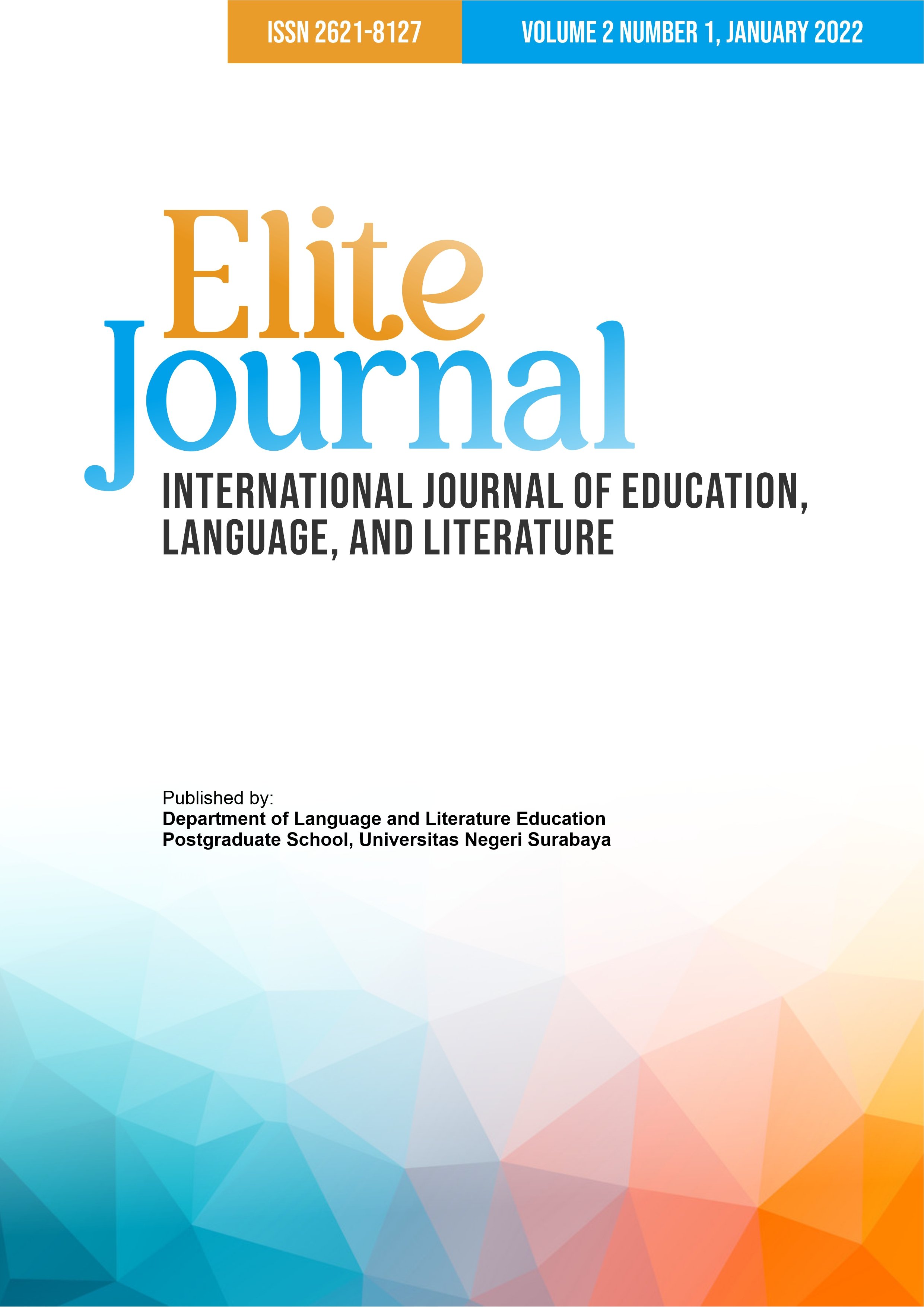THE USE OF FIGURATIVE LANGUAGE IN MAYBELLINE NEW YORK SLOGAN ADVERTISEMENT
DOI:
https://doi.org/10.26740/elitejournal.v2n1.p1-11Keywords:
figurative language , slogan, advertisementAbstract
Figurative language is the language style used by people to communicate. In other words, the figurative language used words to imply another meaning. The benefit of figurative language in this study for the reader was to understand that the theory could be used to provide a clearer and better understanding of the figurative language meaning. This study was conducted to analyze the use of figurative language in the slogan advertisement of Maybelline New York. This study focused on observing the words that contained figurative language using Reaske’s theory (1996). The theory consists of simile, metaphor, metonymy, alliteration, and hyperbole. The method of this study was descriptive qualitative because it described the utterance of the slogans that were categorized into figurative language. At the same time, the data source was taken from the video advertisements of Maybelline New York, which were published on August 2, 2017, to August 30, 2017 on their Official YouTube channel. The result found that the slogan made things more imaginatively appealing. Creative use of figurative language in the advertisement can produce emotionally alive, intellectually appealing, and memorable messages. It is the way of some companies make figurative words as the characteristic for their products or even to describe the company itself in a vision or mission. Buyers will remember this figure of speech as a reference to them that the product supports an individual's movement or goal.
References
AA. (2020). Interview with Communication and Information Department of Sidoarjo.
Abraham, T. (2011). Lessons from the Pandemic: The Need for New Tools for Risk and Outbreak Communication. Emerging Health Threats Journal, 4(1), 7160. https://doi.org/10.3402/ehtj.v4i0.7160
Arifin, Z. (2009). Evaluasi Pembelajaran. Bandung: PT. Remaja Rosdakarya.
CDC. (2014). Crisis and Emergency Risk Communication. United State: CDC.
Denzin, K. N., & Lincoln, Y. S. (2009). Handbook of Qualitative Research (Dariyatno, Ed.). Yogyakarta: Pustaka Pelajar.
DP. (2020). Interview with the Leader of Covid-19 Task Force.
EP. (2020). Interview with the Patient of Covid-19.
FAD. (2020). Interview with Academic.
Haddow, G. D., & Haddow, K. S. (2009). Disaster Communications in a Changing Media World. Burlington: Elsevier Inc.
Hariyanto, D. (2018). Komodifikasi Ibadah Umrah Di Jawa Timur Dalam Perpektif Baudrilard (Airlangga University). Airlangga University, Surabaya. Retrieved from http://repository.unair.ac.id/id/eprint/80353
HDW. (2020). Interview with doctor.
IE. (2020). Interview with Doctor.
KA. (2020). Interview with Academic.
Kabupaten Sidoarjo, D. (2020). Pusat Informasi Dan Komunikasi Covid-19 Kabupaten Sidoarjo. Retrieved from Diskominfo Kabupaten Sidoarjo website: https://covid19.sidoarjokab.go.id
Muller, R. T. (2020). Covid-19 Brings a Pandemic of Conspiracy Theories. Retrieved December 12, 2021, from Psychology Toda website: https://www.psychologytoday.com/us/blog/talking-about-trauma/202004/covid-19-bringspandemic-conspiracy-theories
Patrianti, T. (2020). Risk Messages Dan Perspektif Risk Communication Di Masa Pandemi Covid-19: Pandemi Dalam Banyak Wajah. Depok: Rajawali Press.
Patton, M. Q. (1990). Qualitative Evaluation and Research Methods. Newbury Park, CA: Sage Publications, Inc.
Pusat Informasi dan Komunikasi Covid-19 Kabupaten Sidoarjo. (n.d.). Retrieved from https://covid19.sidoarjokab.go.id/
Royse, D., Thyer, B., & Padgett, D. (2010). Program Evaluation in Introduction. Belmont: Wadsworth.
W. (2020). Interview with Communication and Information Department.
Wang, Y., McKee, M., Torbica, A., & Stuckler, D. (2019). Systematic Literature Review on the Spread of Health-Related Misinformation on Social Media. Social Science and Medicine, 240, 112552. https://doi.org/0.1016/j.socscimed.2019.112552.
WHO. (2020). Questions and Answers for Coronavirus.
Downloads
Published
How to Cite
Issue
Section
License
Copyright (c) 2021 Vanesa Elfiera Agresri Ramadhan

This work is licensed under a Creative Commons Attribution-ShareAlike 4.0 International License.
 Abstract views: 1766
,
Abstract views: 1766
, PDF Downloads: 1749
PDF Downloads: 1749





